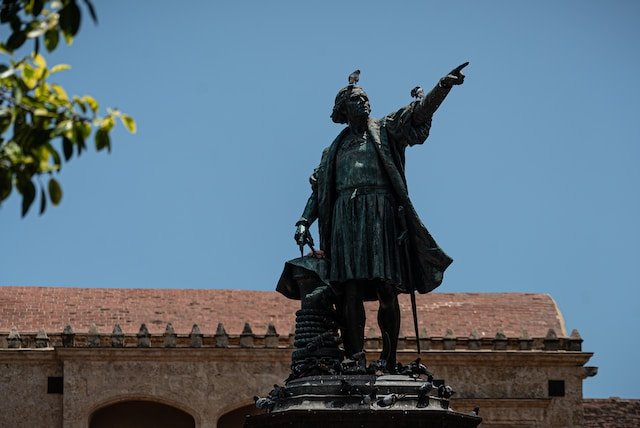The Columbian Exchange
The Columbian Exchange is a term that may not be familiar to many, but it describes an event that changed the course of history. This intricate web of transcontinental biological and cultural transfers that began in the late 15th century significantly shaped the modern world. In this article, we’ll delve deep into the nuances of the Columbian Exchange, its impacts, and its long-lasting significance.
Introduction
The phrase “Columbian Exchange” refers to the period after Christopher Columbus’s 1492 voyage. It encapsulates the widespread transfer of plants, animals, culture, human populations, technology, diseases, and ideas between the Americas, West Africa, and the Old World. These exchanges had profound implications, some beneficial and others devastating.
Plants and Crops
The New World introduced Europe to crops such as potatoes, tomatoes, maize (corn), and cacao (from which chocolate is made). These imports led to increased food diversity and, in some cases, solutions to famine, especially with the potato in places like Ireland.
Conversely, Europeans introduced wheat, rice, sugarcane, and several fruits to the Americas. These crops became staples in their new environment, playing pivotal roles in local economies and diets.
Animals
The Old World brought horses, cows, pigs, and sheep to the New World. The introduction of horses, in particular, transformed many indigenous cultures, especially those of the Great Plains in North America. They revolutionized transportation, warfare, and hunting practices.
Diseases
One of the darker aspects of the Columbian Exchange was the introduction of Old World diseases to the Americas. Smallpox, measles, and influenza devastated indigenous populations who had no immunity against these new diseases. Some estimates suggest that up to 90% of the native population of the Americas died from diseases introduced by Europeans.
Cultural and Technological Transfers
Beyond the tangible exchanges, the Columbian Exchange also fostered the transfer of ideas and technologies. European settlers introduced guns, metal tools, and various agricultural techniques to the Americas. Meanwhile, the Old World experienced a cultural revolution, absorbing indigenous art, music, and culinary traditions.
Impact on Global Population and Economy
The exchange played a significant role in global population dynamics. While indigenous populations in the Americas suffered from diseases, Europe experienced a population boom, partly due to the introduction of New World crops. This led to urbanization and the emergence of modern capitalist economies.
Simultaneously, the economic opportunities in the Americas triggered a massive wave of European migration. Slavery became a tragic and significant aspect of this new global economy. African slaves were transported to the New World as part of the transatlantic slave trade, forever changing the demographic and cultural landscape of the Americas.
Implications and Long-term Effects
The Columbian Exchange was an era of unprecedented global connectivity. The rapid dissemination of crops, animals, and technologies fundamentally reshaped societies worldwide.
Environmental Impacts: The rapid movement of species across continents led to invasive species outcompeting local flora and fauna. For example, European rats became pests in the New World, while Old World weeds displaced native plants.
Economic Impacts: The exchange also created new economic systems. The value of silver mined in the New World, for instance, led to price inflation in Europe, impacting economies as far away as China.
Evolution of Tastes and Diets: Europe’s culinary landscape was significantly enriched. Imagine Italian cuisine without tomatoes or Belgian chocolates without cacao. Similarly, Indian and Chinese cuisines embraced the spicy kick of chili peppers, native to the Americas.
The Pioneers of the Exchange
One cannot discuss the Columbian Exchange without recognizing the pioneers, explorers, and traders who bridged these once-separated worlds. While Columbus is often at the forefront, there were countless others, like Amerigo Vespucci, Ferdinand Magellan, and Hernán Cortés, who ventured into uncharted territories. Their tales of exploration not only fueled Europe’s interest in colonization but also facilitated the exchange of goods and knowledge.
Role of Indigenous Communities
Indigenous communities played a vital role in this exchange. Their vast knowledge of the land, agriculture, and medicinal plants introduced Europeans to crops like quinoa, cassava, and rubber. Their techniques, like terraced farming, were groundbreaking for European settlers.
However, it’s also essential to acknowledge the often exploitative nature of these interactions. Many indigenous communities faced forced labor, cultural erasure, and loss of their ancestral lands.
Conclusion
The Columbian Exchange serves as a testament to the interconnectedness of human societies. While the period was marked by exploration, discovery, and cross-cultural exchanges, it also had its share of tragedies, particularly the decimation of indigenous populations and the horrors of slavery.
Yet, it’s undeniable that this event set the stage for the world as we know it today, influencing everything from our diets to our economies and cultures. Understanding the Columbian Exchange provides insights into the complexities of globalization and the profound ways in which different parts of the world can impact each other, serving as a crucial lesson for an increasingly interconnected world.








